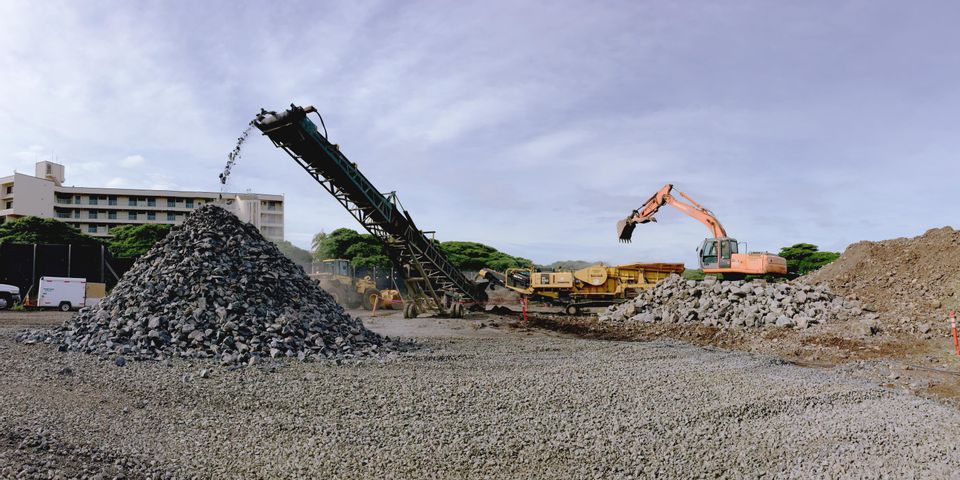
Many landscapers and developers rely on construction aggregates to stabilize and beautify their projects. Since there are several types of rock available, you can use the guide below to determine which suits your project’s needs.
A Beginner’s Guide to Construction Aggregates
Limestone
This calcium carbonate rock can be crushed and chipped to create aggregates of various sizes. It’s typically whitish-gray and is used decoratively to create an austere exterior. Since it’s extremely durable, this rock is also used in road construction to reinforce concrete surfaces.
Granite
This natural stone forms when magma cools slowly beneath the Earth’s crust. When it’s broken into smaller aggregates, granite can be used to fill pathways, playground areas, and other high-traffic surfaces. Available in radiant whites, pinks, and blacks, this colorful material is also a top choice for decorative landscaping.
Gravel
Gravel is a loose assortment of various stones that range in size from a few millimeters to several inches. Gravel produced in Hawaii can range from blue-gray to a brownish-red in color. This type of material can be used for many construction applications such as utility bedding and backfill, road base and subbase material, house pads and temporary roads.
 Gravel material can be used to enhance an area’s appearance and practicality. For example, gravel is often placed on trails and roads to improve traction, and landscapers use the aggregate to provide gardens with better drainage.
Gravel material can be used to enhance an area’s appearance and practicality. For example, gravel is often placed on trails and roads to improve traction, and landscapers use the aggregate to provide gardens with better drainage.
Crushed Concrete
Crushed concrete is produced by recycling construction demolition materials, such as concrete or asphalt pavement and performs exactly like gravel material in most construction applications. This makes it an eco-friendly choice to fill retaining walls, raise garden beds, and create sub-bases for foundations. The material can be produced on-site with mobile crushing equipment to create a range of sizes from fine to larger-sized particles.
Sand
Although sand is incredibly fine, it still comes from rock and is a byproduct of different refined stones. Different types of rock will create various different grades and quality of sand. As an aggregate with small particles, sand can be distributed and shaped as needed.
For instance, it can be spread to form a volleyball court or compacted to create a sandbag. In construction, this material is also commonly used as a thickening agent when preparing asphalt or concrete mixes.
If you are looking for construction aggregates for a project, turn to Pineridge Farms, Inc., in Honolulu, HI. These professionals can assist you with finding the right rock for your job and will haul the materials to your worksite so that your team can focus on their tasks. They’ll also bring mobile crushing and screening equipment to recycle building materials and concrete into crushed aggregate. Get more information about their services online, or call (808) 847-6746 to request an estimate.
About the Business
Have a question? Ask the experts!
Send your question

